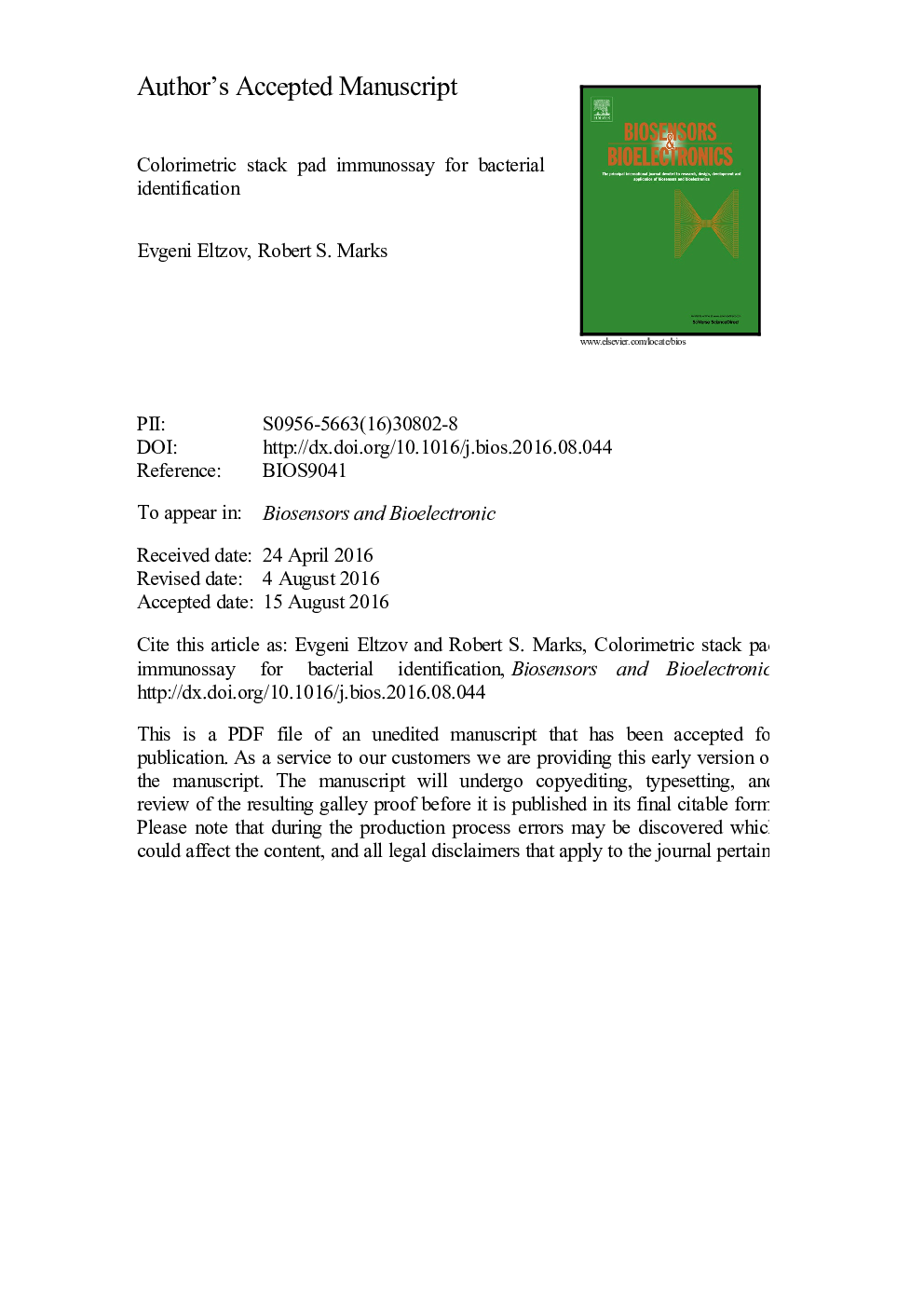| Article ID | Journal | Published Year | Pages | File Type |
|---|---|---|---|---|
| 7230248 | Biosensors and Bioelectronics | 2017 | 27 Pages |
Abstract
A new colorimetric immunoassay concept, utilizing conventional lateral flow membranes (e.g., conjugation, sample, absorption and nitrocellulose), were placed in a different configuration in a stacking manner, where the liquid sample that may contain the analyte diffuses from the bottom to the upper-most layer. The key element of this proprietary technology is a capture layer, where a nitrocellulose membrane is modified with the target analyte of interest, namely in this study target Escherichia coli. During the immunoassay operation, samples contaminated with the target bacteria will conjugate to their corresponding HRP-antibodies laying in wait and the immune-target measurand complex flows by capillarity towards the upper-most layer to generate a colorimetric signal (positive answer) through an enzymatic reaction. In target-free samples, previously immobilized target bacteria on the capture layer will prevent the HRP-labeled anti-target antibodies from migrating to the upper-most layer, where the enzymatic substrate lays in wait. After optimization, the sensitivity of this approach was found to be 1,000 folds higher than ELISAs (102 cells mLâ1). The advantages of the stacked pad assay include: miniaturization, operational simplicity, fast response time (less than 5 min), useful sensitivity.
Related Topics
Physical Sciences and Engineering
Chemistry
Analytical Chemistry
Authors
Evgeni Eltzov, Robert S. Marks,
